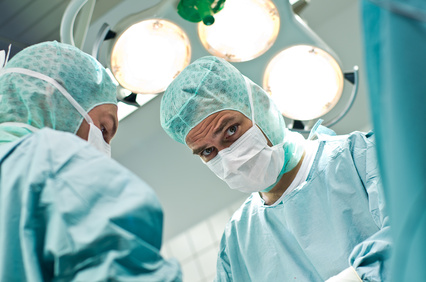Contents
Amino Acids and the Fight Against Aging
It goes without saying that we would all like to turn back the clock so that we could look and feel our best for as long as possible. The reality is that it’s not possible to stop aging. However, there are ways that we can slow down the effects of aging.
What Causes Your Body to Age?
 There are a couple of schools of thought when it comes to aging. Some theorists believe that aging is a natural process that has been programmed into the body. Alternatively, others believe that aging is a consequence of accumulated damage over time. Ultimately, aging is a result of complex interactions between physiology, genetics, biochemistry and behaviour.
There are a couple of schools of thought when it comes to aging. Some theorists believe that aging is a natural process that has been programmed into the body. Alternatively, others believe that aging is a consequence of accumulated damage over time. Ultimately, aging is a result of complex interactions between physiology, genetics, biochemistry and behaviour.
Physiology
The way our body works changes as we age. Body systems and organs adjust and this alters our vulnerability to diseases. Scientists are still working to understand these changes and the relationship to aging. What we do know is that as we age:
• Our heart muscle thickens
• Arteries stiffen
• Lung capacity reduces
• Our kidney and bladder become less efficient
• Our immune system declines
• Body fat increases
• Cognitive function reduces
• Muscle tone declines
• Bones lose density
• Hearing and sight decline
All these factors combine to reduce our physical abilities and make us more susceptible to diseases.
Genetics

genetics is important in the aging process
Aging is affected by our genetics. A recent study of centenarians revealed that 40 percent of participants aged over 110 had several specific genetic signatures in common1. Other studies have shown that genetic manipulation can be used to enhance longevity in a range of organisms, including mice, flies and yeast234. Your genetic makeup contributes to your aging and disease susceptibility.
Biochemistry
Our body is constantly performing complex biochemical reactions. Some of these processes are damaging to our body. There are a number of key biochemical reactions that are linked with aging:
• Hormones – Changes to hormones as we age alter body functions and organs.
• Free radicals – Our cells can be damaged by these unstable oxygen molecules.
• Protein cross-linking – Tissues harden as a result of fused protein molecules.
• Heat shock proteins – As we age these proteins decline and our cells are not as well protected from stress.
• DNA repair – The systems involved in DNA repair are not as effective as we age.
Behaviour
The way we behave impacts the aging process. Drinking alcohol, tobacco use, physical inactivity and poor diet, all help to speed up the aging process. However, there are actions we can take to slow down aging and limit its impacts.
Different Ways to Reduce the Impacts of Aging
Over the years we have devoted a lot of time to finding the allusive ‘fountain of youth’. While the search continues, along the way we have found ways to try and preserve our looks and youthfulness. We have outlined a few measures that people take to try and reduce the signs of aging, some of which are more successful than others.
Cosmetics
The cosmetic industry is one of the leading promoters of anti-aging. A whole industry has been created around the idea of making people look younger and to fight the visible signs of aging. This multi-billion dollar industry invests a lot of money into researching different chemicals, organic compounds, natural remedies and biochemical reactions in order to develop anti-aging skin-care products. The reality is that most scientists and dermatologists agree that these products are limited in their effectiveness and ultimately, don’t slow down the aging process.
Surgery
 Cosmetic surgery is a massive growth industry across the world. Women (and increasingly, men) are turning to cosmetic surgery to alter their appearance. Patients choose surgery for a range of reasons, including trying to reverse the visible signs of aging. There are a vast number of procedures available including forehead treatments, eyebrow lifts, chin and neck augmentation, lip fillers, amongst others. All these facial surgeries are specifically designed to make our face look more youthful. However, as with any surgery, there are risks. Also, surgery is an expensive option and the results require frequent ‘touch-ups’.
Cosmetic surgery is a massive growth industry across the world. Women (and increasingly, men) are turning to cosmetic surgery to alter their appearance. Patients choose surgery for a range of reasons, including trying to reverse the visible signs of aging. There are a vast number of procedures available including forehead treatments, eyebrow lifts, chin and neck augmentation, lip fillers, amongst others. All these facial surgeries are specifically designed to make our face look more youthful. However, as with any surgery, there are risks. Also, surgery is an expensive option and the results require frequent ‘touch-ups’.
Hormones
There are a range of hormones in our body that alter in concentration as we age. Some of these hormones are promoted as anti-aging treatments:
Human Growth Hormone (HGH) – HGH injections are one of the most contentious anti-aging treatments involving hormones. Many people believe that they feel better and have more energy on HGH supplementation. However, HGH injections are expensive and there is little scientific evidence to support the anti-aging claims linked with HGH 5. The long term effects of HGH supplementation can include excessive hair growth, water retention, heart enlargement, liver and thyroid damage, low blood pressure, acromegaly and premature death.
Oestrogen – One of the most well-known and best studied hormones. Oestrogen has been widely prescribed as a replacement therapy to help women coping with the symptoms of menopause. However, the long-term effects of oestrogen supplementation are complex and can have both negative and positive implications for women’s health.
Testosterone – As men age their testosterone levels slowly decline. While testosterone therapy can help men who produce little or no testosterone, there has been little research into the benefits for older men who have healthy levels of this hormone.
Stem cell therapy
 One of the most exciting developments in the search for a cure for aging and disease has come from stem cells. Stem cells are cells that can divide to become any type of cell within the body. One study using stem cells from healthy, young mice injected into aging mice significantly increased their longevity. The old mice were expected to die within a few days; instead they lived an average of 71 days longer 6. There is plenty of ongoing research investigating the application of stem cells to treat diseases and the effects of aging.
One of the most exciting developments in the search for a cure for aging and disease has come from stem cells. Stem cells are cells that can divide to become any type of cell within the body. One study using stem cells from healthy, young mice injected into aging mice significantly increased their longevity. The old mice were expected to die within a few days; instead they lived an average of 71 days longer 6. There is plenty of ongoing research investigating the application of stem cells to treat diseases and the effects of aging.
Antioxidants
Of all the anti-aging measures currently available, the use of antioxidants is the most accessible, affordable and successful. By making simple changes to your diet, it’s possible to improve your body’s biochemical processes and physiology. This can help to slow down aging.
What are Antioxidants?
Antioxidants are molecules that stop the oxidation of other molecules within our body. The process of oxidation releases free radicals, which can trigger chain reactions leading to the death or damage of cells. Antioxidants can remove the free radical intermediates and terminate chain reactions. The most powerful antioxidants can be found within amino acids and are readily available in certain foods.
Glutathione
The most powerful and abundant natural antioxidant within your body is called glutathione. Glutathione is formed from the amino acid Cysteine and the carboxyl group of the glutamate side-chain.
It boosts the immune system, protects vision, stops the build-up of oxidised fats, and helps to convert carbohydrates into energy and most crucially reduces the damage done to important cell components caused by reactive oxygen molecules such as free radicals and peroxides7.
During this process, glutathione removes undesirable pollutants and toxins from the body, making it essential in slowing down the aging process. Here is an excellent video explaining the significance and sources of Glutathione to the body:
[tube]Eh2PYQBICWs[/tube]
Carnitine
Derived from two essential amino acids (lysine and methionine), carnitine helps to boost mitochondrial function8910. Mitochondria are essential for converting energy and in ensuring that our cells function correctly. Carnitine is very important in the fight against aging because as we get older, mitochondrial function declines. If we can enhance mitochondrial function, we can improve the biochemical processes that tend to breakdown with age. Research has shown that carnitine elevates antioxidant activity, further contributing to anti-aging activity within the body 11.
Sources & Suggested Dosage
To take full advantage of the anti-aging properties associated with antioxidants it’s important to have a diet rich in foods containing amino acids such as lysine, methionine and glutathione. Fresh, organic produce is ideal. Some of the best foods to consume include legumes, pulses, blueberries, cherries, broccoli, spinach, walnuts, salmon, tomatoes, oranges, oats and whole grains. Red meat and dairy products are also good sources of carnitine and glutathione. One particularly high-quality source of Carnitine is Carnipure™, which is produced by Lonza in Switerland and uses a patented and proprietary process to yield Carnitine of pharmaceutical grade purity.
Maintaining a regular intake of these antioxidant-rich foods will help combat the effects of aging. Ideally, you want to consume several antioxidant-rich foods with every meal to ensure that your body can reap the full benefits. There are also a range of supplements on the market that you can take to help boost concentrations.
Conclusion
Reducing the negative impacts aging has on our body is something that we all desire. While we can’t turn back the clock, the antioxidants within amino acids offer all of us the best opportunity to limit the effects of aging.
Hormone treatments are complex and not necessarily beneficial; cosmetics and surgery are expensive and superficial in that they don’t treat the underlying cause of aging. While stem cell research may offer a new approach to anti-aging, there is still a lot of work to be done in this area.
The advantage of antioxidants is that they are accessible to everyone through amino acids such as lysine, glutathione and methionine. By making simple changes to your diet it’s possible to maximise antioxidant activity and fight aging. Not only will these amino acids reduce the effects of aging, but they will also help your body function better and protect you against disease.
Related studies:
- “http://www.plosone.org/article/info%3Adoi%2F10.1371%2Fjournal.pone.0029848#s3” ↩
- “http://www.ncbi.nlm.nih.gov/pubmed/16387715 ↩
- “http://www.pnas.org/content/101/34/12610.short ↩
- “http://www.ncbi.nlm.nih.gov/pubmed/15722108” ↩
- “http://www.nejm.org/doi/full/10.1056/NEJMp020186” ↩
- “http://www.nature.com/ncomms/journal/v3/n1/full/ncomms1611.html” ↩
- “Pompella, A; Visvikis, A; Paolicchi, A; De Tata, V; Casini, AF (2003). “The changing faces of glutathione, a cellular protagonist”. Biochemical Pharmacology 66 (8): 1499–503. doi:10.1016/S0006-2952(03)00504-5. PMID 14555227” ↩
- “http://www.ncbi.nlm.nih.gov/pubmed/11854488 ↩
- “http://www.ncbi.nlm.nih.gov/pubmed/11854487 ↩
- ” http://www.ncbi.nlm.nih.gov/pubmed/11854529 ↩
- “http://www.ncbi.nlm.nih.gov/pubmed/21701126 ↩
